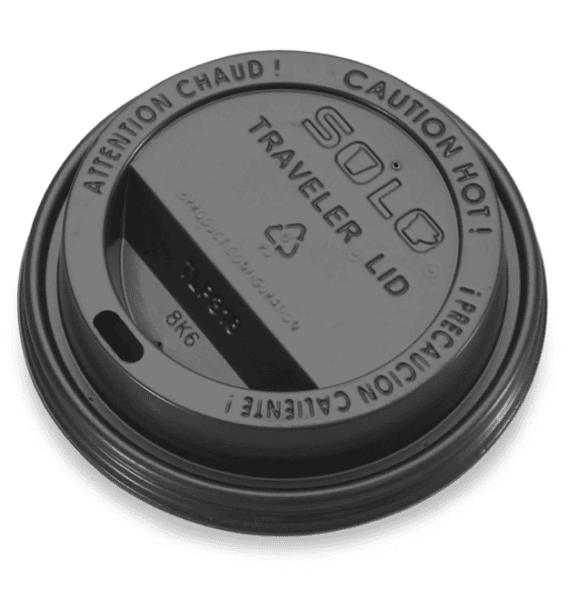This resource was developed as part of the AHA’s Teaching Things project.
Materials
- Readily accessible object, such as:
- Disposable hot-beverage lid
- Disposable water bottle
- Reusable travel mug or water bottle
- Food packaging
- Paper and pencil for sketching
Students should begin by describing their chosen object, making a rough sketch of it, and labeling its various components and inscriptions. They should also take note of the object’s physical characteristics, such as its measurements, weight, texture, and materials; its smell; the sounds it makes; and, if applicable, its taste.
In the case of a Solo brand disposable hot-beverage lid, students will quickly observe that it is made from plastic, mass-produced, and will attach to and cover a cup and enable a person to drink from it. They will readily note words and symbols imprinted on the lid. They might hazard a guess that it is made through a molding process, and they would be correct. The challenge, then, is to push students beyond these direct observations to ask questions with increasing levels of complexity that lead them to posing historical questions.

Figure 11. Solo brand disposable hot-beverage lid.
Many students will readily identify the universal recycling symbol of three chasing arrows; some might note that the inclusion of a 6 and PS identify the lid as polystyrene. But why is the recycling symbol on the lid? How did it come into existence? What, in other words, is the history behind its development, use, and persistence? Further exploration of this symbol can lead students to the history of the US and international environmental movements.
Disposable lids are so ubiquitous that their function in US culture seems unremarkable. And yet people have not always used plastic disposable drinkware. What social and cultural circumstances prompted its development? Why, in other words, did people require a lid that would allow them to both drink from a cup and minimize spillage? Was it quickly embraced? What did people use before its invention?

Figure 12. Universal recycling symbol.
Students might also analyze a food package. After identifying the range of words, symbols, colors, and materials and making additional observations, students should be asked to dig deeper, to question what they think they know. Is the package intended to appeal to a certain age or type of consumer? On what information is their hypothesis based (the colors used in the design or logo, for instance)? What symbols does the packaging include, and why? For instance, does it contain a pareve, kosher, halal, or gluten-free symbol? With whom are these symbols intended to communicate? What does the packaging suggest about the conditions under which food is produced and/or packaged? What is the history behind the development of the nutrition facts label?
An instructor can use these exercises as an entry point for engaging students in a larger historical theme or event. Once they have analyzed and considered the object, students can engage with additional objects for comparison, or work with additional sources that can help them piece together the broader history of which the object is a part. Historical questions posed of the hot-beverage lid might serve as a jumping-off point for a cultural history of coffee and/or tea consumption or the globalization of trade. Food packaging might lead, for example, to histories of health, immigration, and religious life. Either object might prompt an exploration of the history of disposability, waste practices, or environmental history, among other topics. Advanced Placement US history teachers, for instance, might address topics on work, exchange, and technology; migration and settlement; or American and regional culture.
Students can be asked to reflect on how ubiquitous these objects are in their daily lives and reminded that many of the things we view in museums were once part of the daily lives of people in the past—the things through which they conducted their social lives, the objects of their labor, the things that made their houses feel like their own. And while dresses like that on the journal’s cover are now displayed on forms in museum collections for only a few months at a time to prevent fading; are often housed in acid-free tissue and boxes, the garments’ folds supported by padding to prevent splits in the fabric; and examined using cotton gloves to prevent the oils from our hands from degrading the fabric, they were once worn outside on dirty streets, while eating food and drink, and spot cleaned only occasionally.


